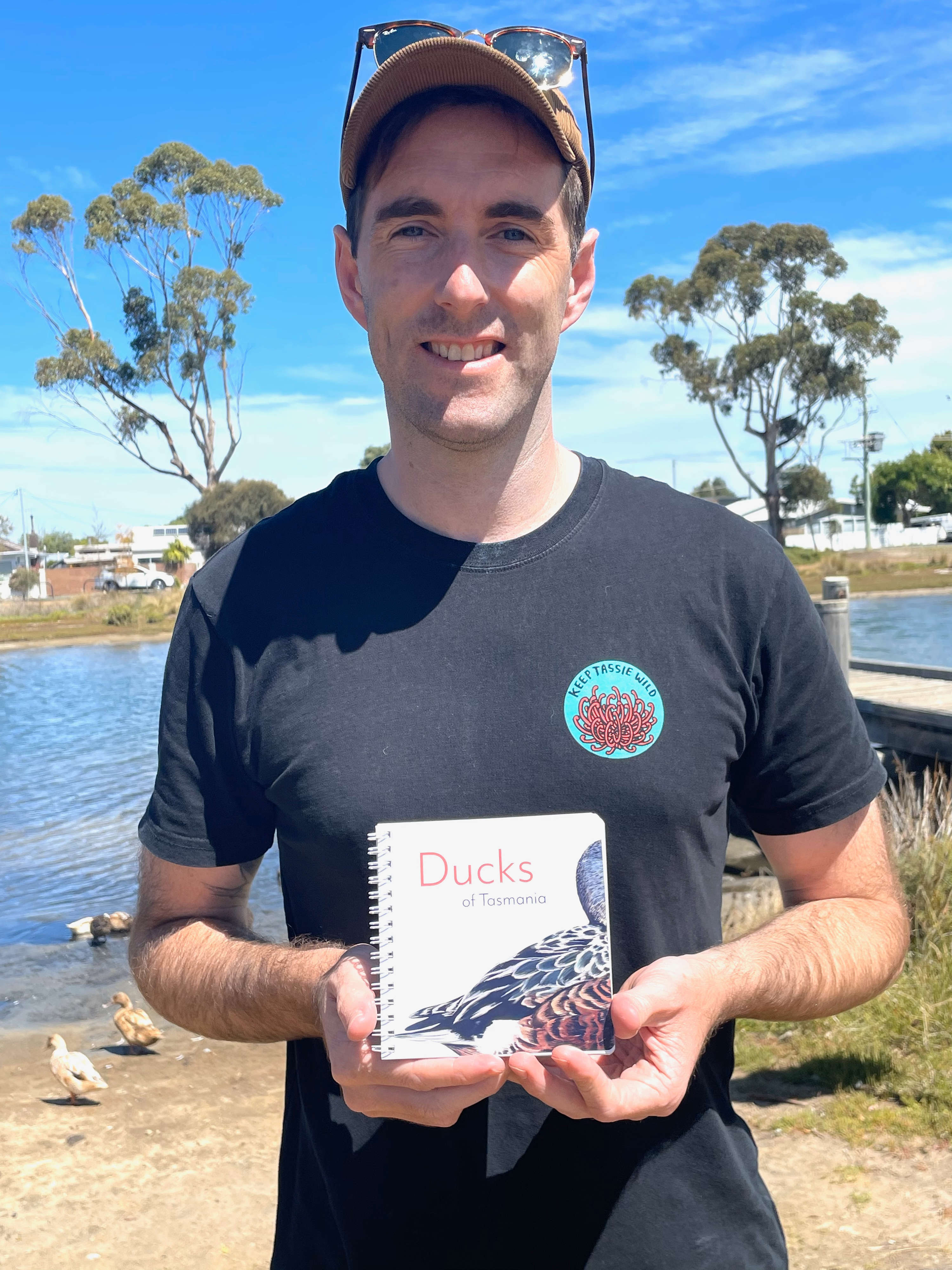Jason Graham set up the Pacific Black Duck Conservation Group because no one else was doing anything to save this under-appreciated bird.
Flocking together to save native Tasmanian ducks

‘Not many people realise that we have a number of native Australian ducks,’ he said, ‘and that some of them are in trouble.’
In New Zealand, the Pacific black duck is threatened with extinction, and it has already disappeared from Lord Howe and Norfolk Islands. Jason wants to stop the same thing happening in Tasmania.
‘The main problems are feeding, and dumped domestic ducks,’ he said. ‘Most of the ducks that people feed at Richmond and on Lauderdale canal are mallards, an introduced species that’s larger and more aggressive. They force native ducks out and pollute the waterways.’
Pressure on duck habitat from climate change adds to the problem, as does interbreeding between Pacific black ducks and mallards.
‘Hybridisation is a natural process,’ said Jason. ‘But here we’ve introduced two species that are normally at opposite ends of the planet.’
The message Jason wants to get across is, don’t feed any ducks. ‘People have good intentions,’ he said. ‘But feeding supports dumped domestic ducks, and results in large flocks of the introduced birds.’
Most southern Tasmanian councils have more than one duck dumping/feeding area, and they have all experienced a public backlash against council workers trying to control the domestic duck population.
‘The council staff I’ve met are passionate about native birds and healthy waterways,’ said Jason. ‘They don’t hate ducks, they’re just pro native duck. When we remove mallards, the waterways improve and we get more Chestnut teals, cormorants, grebes and Pacific blacks.’
For those with dams or private lakes, Jason recommends guinea fowl or Muscovy ducks, which can’t interbreed with native ducks, as an alternative to mallards.
In January, the conservation group collaborated with the Derwent Estuary Program, Birdlife Australia, southern councils and WIRES animal rescue to produce a booklet, Ducks of Tasmania, with illustrations by Tasmanian artist Sam Lyne.
‘It’s aimed at ordinary people, not experts,’ said Jason. ‘We want them to enjoy our different native species by watching them and learning about them, rather than by feeding them.’
The group is distributing the booklet to libraries and schools, and it’s on sale at Fullers Bookshop and Puddleduck Vineyard. Free copies can be picked up from Clarence Council Chambers.
Jason and the Pacific Black Duck Conservation Group have been chosen by Clarence Climate Action as this month’s Climate Champions. The group can be contacted on Facebook.
Eastern Shore Sun, April 2024, page 8